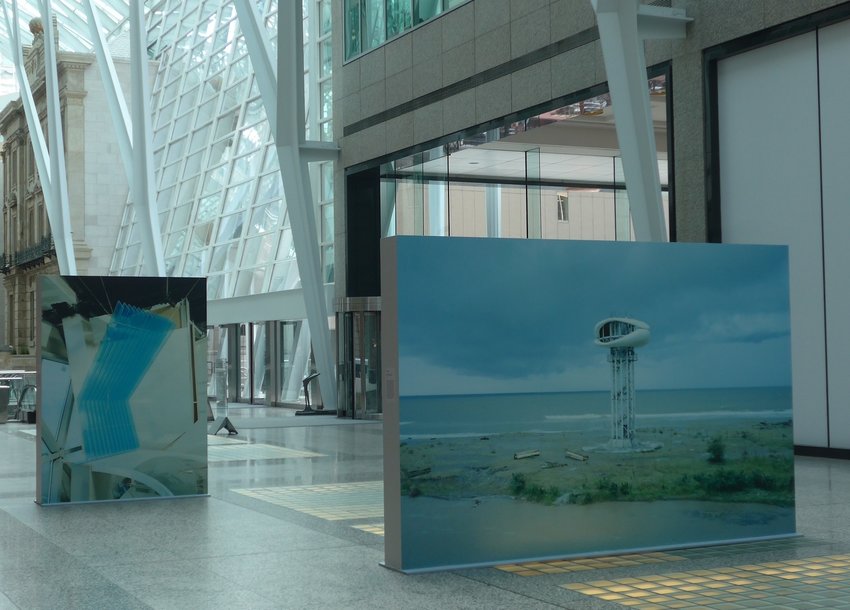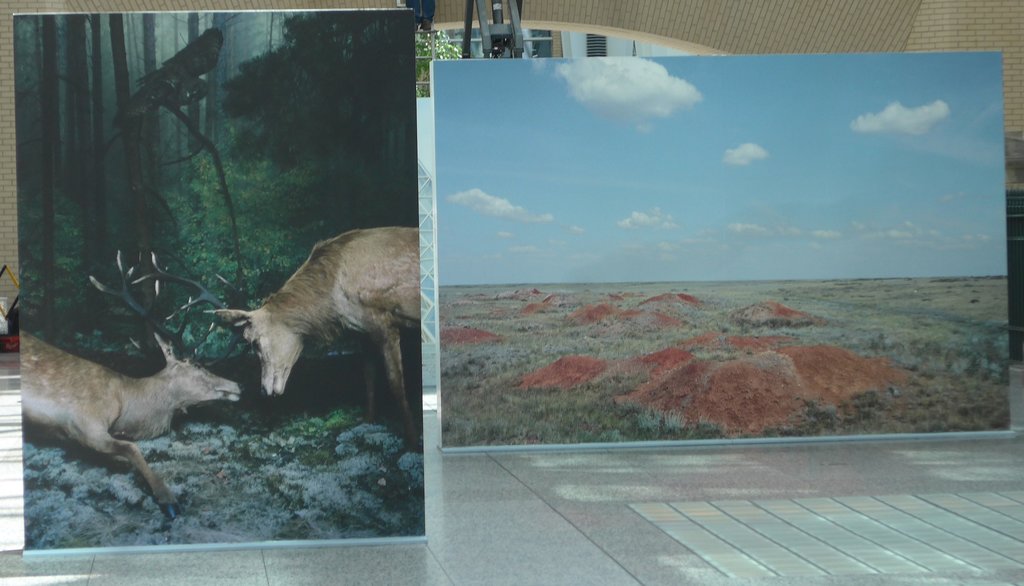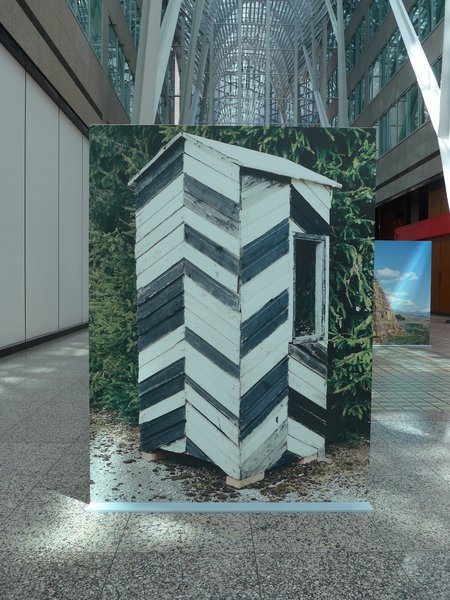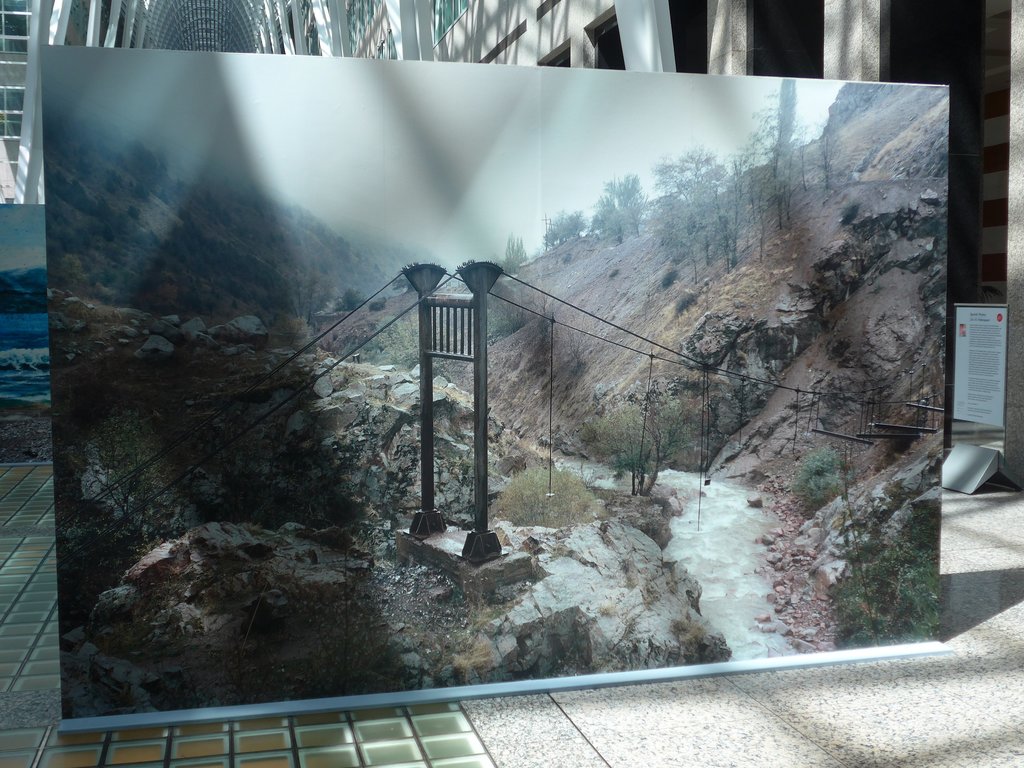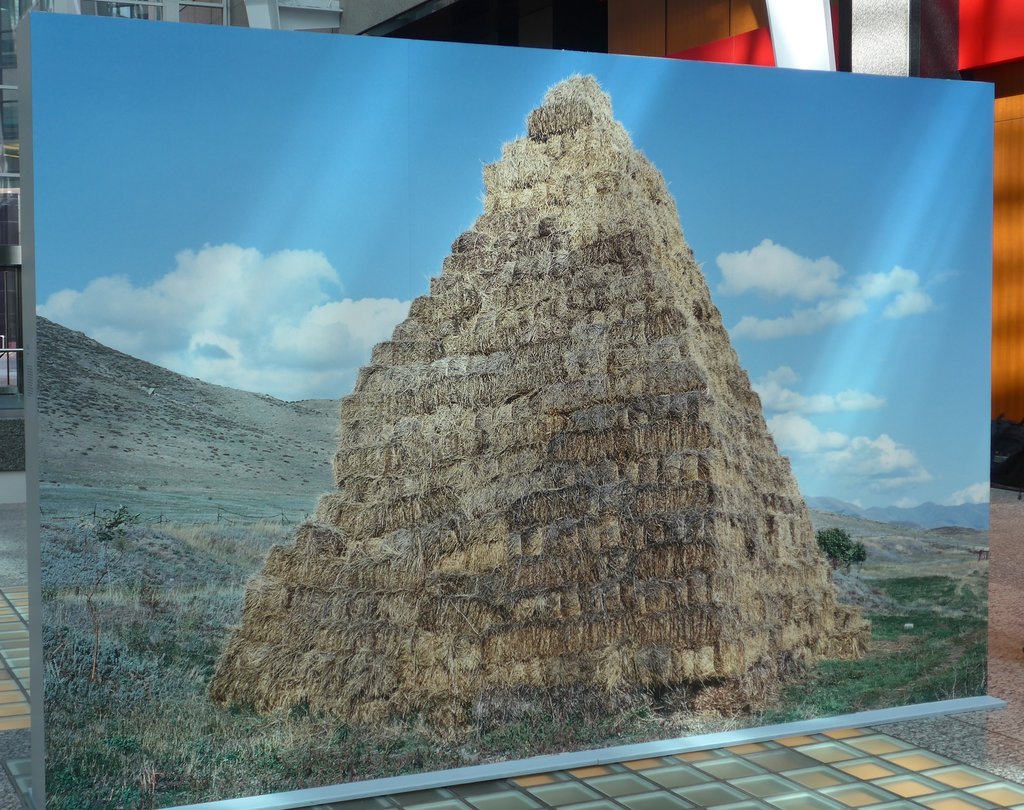It is difficult to top the grandeur of the space that houses this collection of documentary photographs by Sputnik Photos, a photographers’ collective based in Poland. It is a self-proclaimed gleaming cathedral to corporate power. The exhibition consists in two sets of pairs of photographs back-to-back on temporary walls around seven feet or so in height, and of varying width. The first set is met on entering Brookfield Place from Bay Street, and the second set is located at the other end of the naturally lit galleria, towards Yonge Street.
The show’s subject is the recent histories of many of the former Soviet republics – included are photographs from Armenia, Azerbaijan, Belarus, Estonia, Georgia, Kazakhstan, Latvia, Tajikistan, Ukraine and Uzbekistan. It aims to tell a story about the geographical, socioeconomic and cultural changes that have taken place in this vast and diverse region since the Soviet Union’s collapse in 1991. What we see here is a very small selection from a collection of thousands of photographs in Sputnik Photos’ Lost Territories Archive.
The underlying theme is one of dereliction. Scattered around the various former republics of the Soviet Union are the ruins of failed utopian projects. The very idea induces in the viewer a sense of melancholy. This feeling, in turn, colours the viewer’s experience looking at these photographs. The first image you set eyes on, titled Anaklia, Georgia, shows a recently abandoned tower on the Black Sea coast. The label explains that it was part of a project, started in 2011 by then US-supported Georgian president Mikheil Saakashvili, to build a luxury resort. After his electoral defeat in 2013 the project was stopped and fell quickly into disrepair.
Installation view with Sputnik Photos, Anaklia, Georgia, 2013 (right)
There is a sense of abandonment and decay in most of the pictures. We see a dilapidated diorama displayed in a museum in the Pushcha forest region of Belarus. The stuffed deers in the diorama have sadly fallen over. It echoes, we are told, the neglect of the ancient forest itself by the Belorussian state. Incidentally, half of this forest is in Sputnik Photos’ native Poland and is under increasing threat from development and industry. As well, there is a photograph of the Semipalatynsk nuclear test site. This was the Soviet Union’s version of the Nevada test site near Las Vegas. There was little regard for the local population around this area of Kazakhstan affected by the resulting radiation over the years. It speaks to us of the corruption and misrule by the authorities.
Installation view with Sputnik Photos, Diorama from a museum in the Pushcha forest region of Belarus (left) and Kazakhstan, Semipalatynsk Nuclear Test Site, 2016 (right)
Otherwise we find, for example, pictures of a disused bridge and border post, and a tottery straw monument erected as a commentary on the shoddy construction of the buildings destroyed in a major earthquake in Armenia. The sense of abandonment is only heightened by an almost complete absence of people in the pictures.
Installation view with Sputnik Photos, border post at Latvia and Estonia
Installation view with Sputnik Photos, Broken bridge, Uzbekistan
The collective’s stated aim is to show the “continuing consequences” of this post-soviet region’s failed utopian plans. The overall feeling one gets from these photographs is one of emptiness and malaise. The commentaries that accompany each picture, again, reinforce this. Certainly the legacy of soviet rule has not been positive in terms of the subsequent political and economic upheavals. But what purpose is ultimately served by documenting such things as the homelessness of earthquake victims and bad propagandistic art? I’m not sure.
Installation view with Sputnik Photos, Pyramid monument, Armenia
Finally, I cannot help thinking that despite our own relative political and economic security, there are plenty of failures documented here. There are, among other things, the decline of urban centres, such as Detroit, and the damage we inflict on the environment, e.g., the razing of vast tracts of forest to extract oil from the tar sands in Alberta. That is not to suggest that Sputnik Photos ought to have documented the west’s illnesses as well, in some sort of misguided attempt to be balanced. No, I mention this because of a specific comment written on the introductory label for this exhibition. It reads: “The galleria’s open atrium, often described as a ‘crystal cathedral of commerce’, epitomizes a thriving financial environment, one at odds with these images of a fallen empire.” I detect a degree of Schadenfreude here, or at least a self-congratulatory tone. History is messy and often tragic, and that includes our own.
Text and photo: Hugh Alcock
*Exhibition information: Sputnik Photos Collective, LTA 10: Palimpsest, April 29 – May 31, 2019, Allen Lambert Galleria, Brookfield Place, 181 Bay Street, Toronto. Gallery hours: Mon – Sat 6 am – 2 am, Sun 9 am – 2 am.

